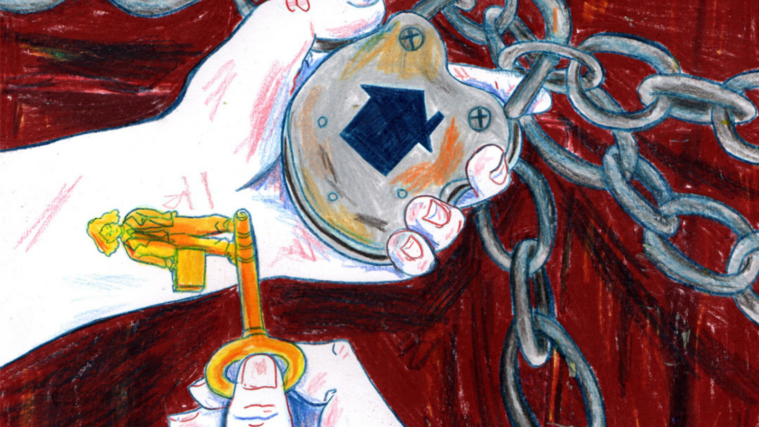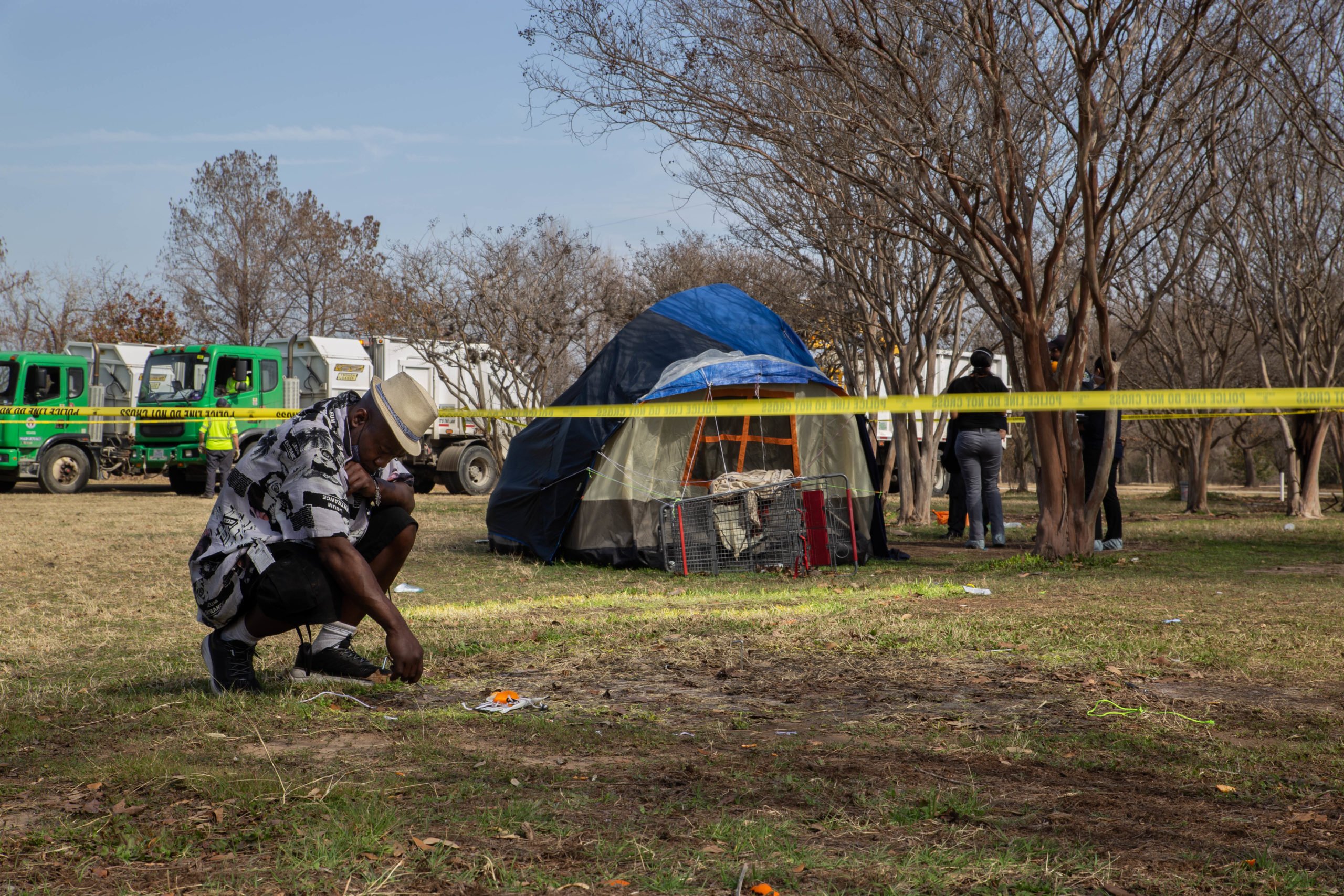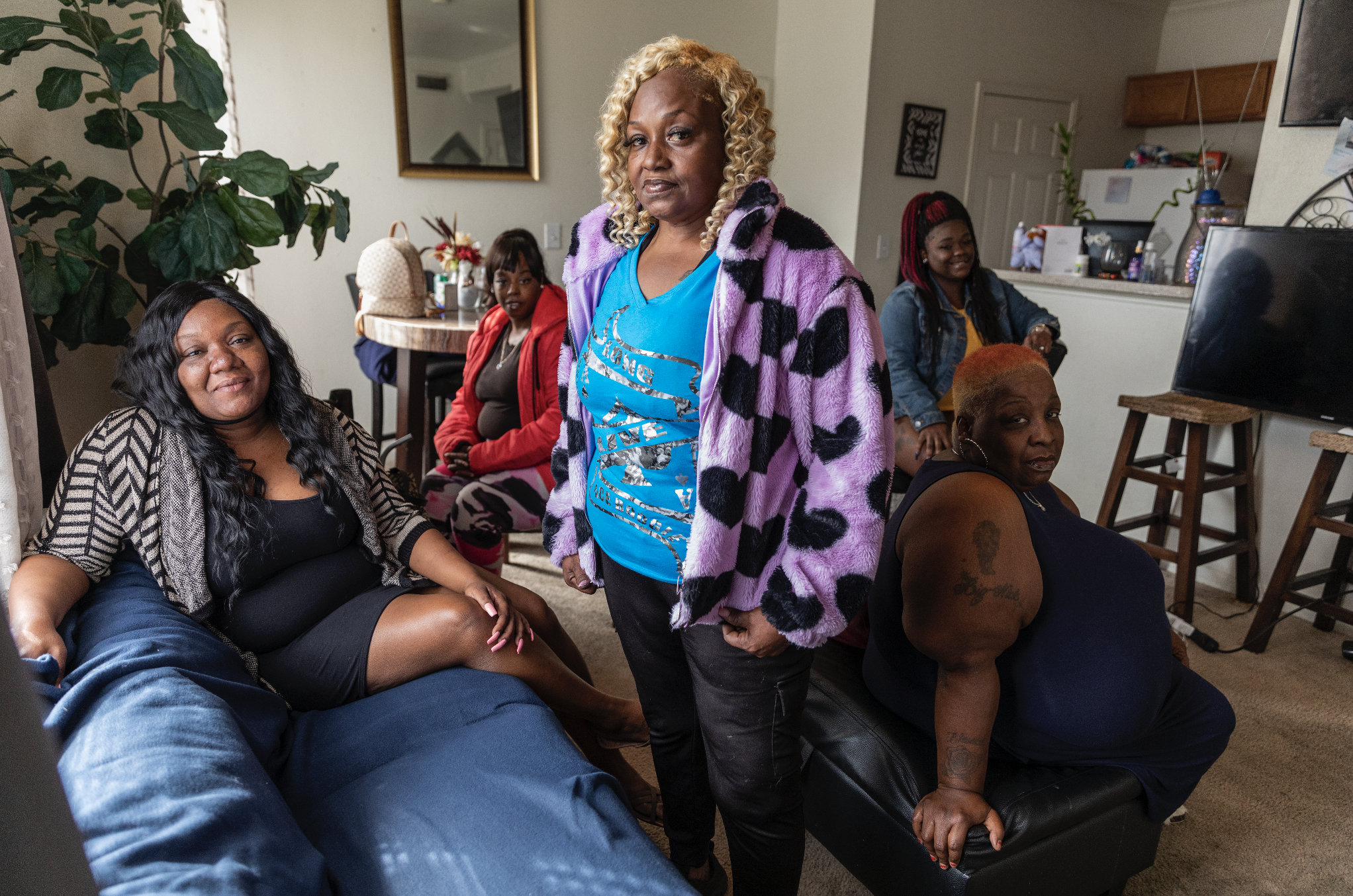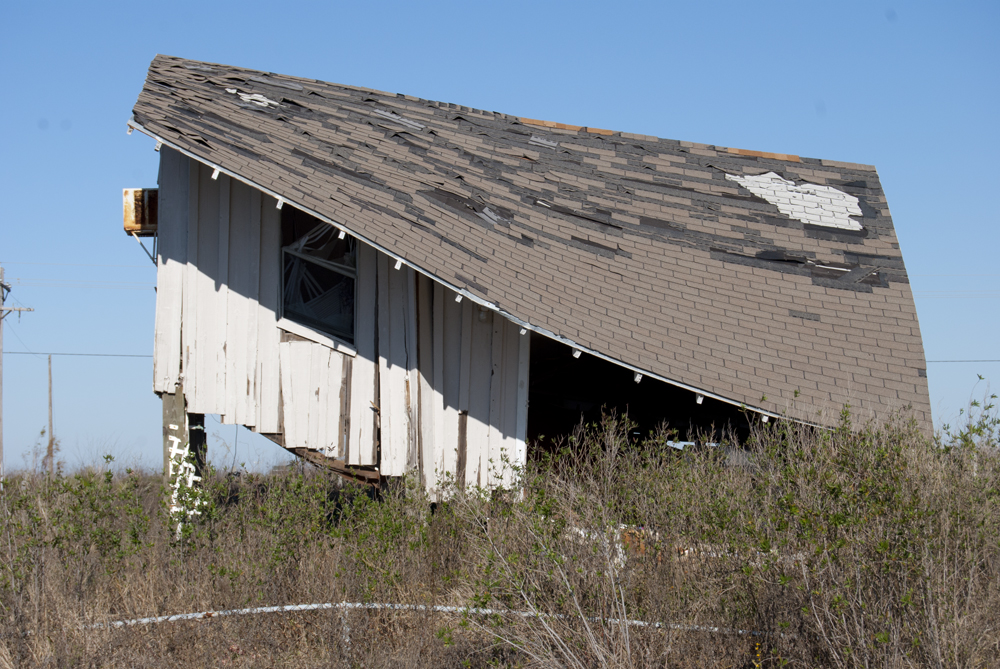
Five Years On, Hurricane Ike Recovery Still Painfully Slow

Above: A dilapidated house on Bolivar Peninsula, summer 2011.
Last week marked the fifth anniversary of Hurricane Ike, the third costliest hurricane in U.S. history but also one that received relatively little attention from the national media. Ike devastated Galveston Island, parts of the mainland and nearly wiped the Bolivar Peninsula communities of Crystal Beach and Gilchrist off the map (who could forget this iconic image?). The storm took the lives of 112 people and did $30 billion worth of damage. More than 100,000 homes and businesses were flooded.
I’ve been following the story of the recovery off and on for five years now, especially the housing component. In 2008, the federal government awarded Texas $3.1 billion to spend on long-term recovery. Despite the devastation being concentrated in urban or semi-urban Galveston County, Rick Perry put the Texas Department of Rural Affairs in charge of the infrastructure component, disbursing money down to the locals through an inexplicably complex process.
A tiny agency, TDRA hired the job out to a contractor, HNTB, which frittered away money on administrative costs and got little accomplished.
TDRA proved to be such a disaster that the agency was later folded into the Texas Department of Agriculture. On the housing side, the Texas Department of Housing and Community Affairs didn’t do much better. The head of that agency resigned in 2011 and authority over the funding was moved to the General Land Office.
I did some extensive reporting on the pace of recovery on Bolivar Peninsula in 2011 and what I found was that only a tiny fraction of the aid had reached the storm victims. The folks I met were by and large upset, frustrated and left wondering what in the hell had gone wrong. At that point, three years after Ike struck, Texas had spent less than 3 percent of the $1.7 billion earmarked for housing. Statewide, just 36 new homes had been built.
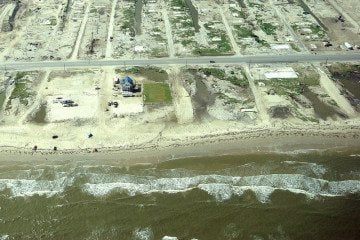
Two years later, and five years after the storm, only 41 percent of all the homes have been rebuilt or rehabilitated, according to data I obtained from the General Land Office. Of the $1.6 billion the state expects to spend on housing, it’s only paid out $488 million, or a little more than 30 percent.
Nowhere has the pace of recovery been more fitful and contentious than Galveston Island.
Although natural disasters can bring communities together in extraordinary ways, the long, tedious haul of rebuilding is often when the fault lines are exposed. Almost as soon as people returned to Galveston after Ike, there were calls to not rebuild the three public housing buildings damaged by the storm. Some of Galveston’s poorest residents lived here and they felt abandoned and hurt when it seemed the rebuilding effort wouldn’t include them. Five years later, after much racially-charged political upheaval, not a single public housing unit has been rebuilt, despite legally binding agreements to replace all 569 units. Thousands of people are on a waiting list to move in.
A slate of virulently anti-public housing—critics say, anti-poor—candidates backed by a hard-right tea party campaign were elected to city council last year on a pledge of massive resistance to rebuilding the units. However, the General Land Office pledged to halt all of Galveston’s aid totaling hundreds of millions. Stuck, the city reluctantly capitulated. As a sign of goodwill, the GLO released a tranche of $17 million for road projects in July “in recognition of the city’s improved cooperation,” wrote GLO spokesman Jim Suydam in an email.
Still, even on a fast timeline, the first public housing units won’t be reopened until October 2014, at the earliest. City leaders are also aggressively opposed to rebuilding so-called scattered sites, subsidized apartments that would be dispersed around the island.
What you’re left with is a picture of a largely dysfunctional recovery process that has a disproportionate impact, as always, on the poor. This is not just anecdotal, as the Houston Chronicle found.
Scores of vacant lots and empty houses in Galveston’s minority neighborhoods are mute evidence of the lingering effects of the destruction wrought by Hurricane Ike five years ago.
“Vacant house after vacant house after vacant house,” said David Miller, president of the local NAACP chapter, on a drive through Galveston’s low-income areas.
[…]
[D]ata from the Galveston Central Appraisal District show that more than 4,000 properties that suffered 50 percent or more damage have yet to be repaired or rebuilt. Studies by Texas A&M University show that housing in minority and low-income areas suffered proportionately more damage and were the slowest to rebuild.
Of course, a poor man’s crisis is sometimes a rich man’s boon.
By scouring shabby properties from the map, the hurricane opened the way for more expensive development that is changing the character of many neighborhoods. “It gave the island a chance to upgrade some of those distressed properties,” said Kelly Kelley, a Galveston Island real estate agent.
